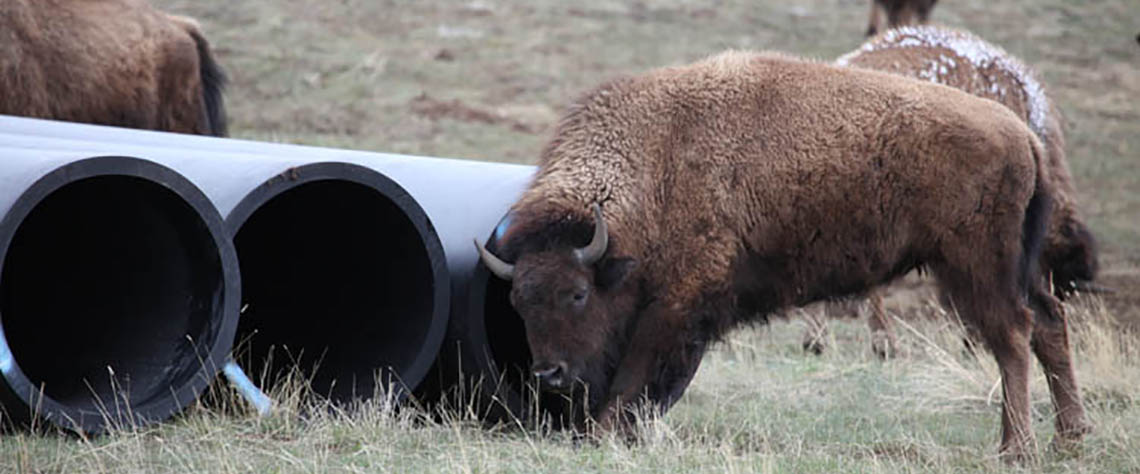
The 25,000-acre National Elk Refuge near Jackson, Wyoming is one of 548 National Wildlife Refuges throughout the country administered by the U.S. Fish & Wildlife Service (USFWS). According to the USFWS, the refuge works to provide, preserve, restore, and manage the winter habitat for the Jackson elk herd and bison; the habitat for endangered species, birds, fish, and other big game animals; and provide compatible human uses associated with the wildlife and wild lands. In addition, it is the world’s largest wintering concentration of elk, which has both national and international significance.
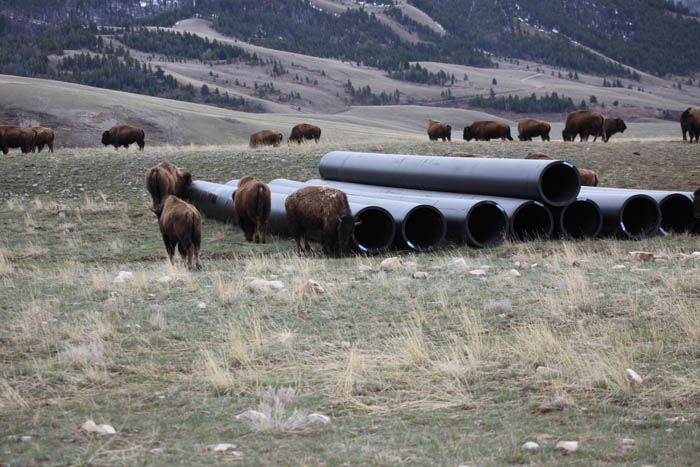
Water Loss
In the past, open canals and ditches were used to irrigate the land in the National Elk Refuge. This frontier era method was prone to evaporation, ground seepage and contamination from salty soils. According to Lori Iverson from the USFWS National Elk Refuge Education & Visitor Services department, 85 – 90 percent of the water was lost trying to reach its destination when the old system of irrigation was in use. So, the USFWS needed a more reliable and efficient pipeline irrigation system.
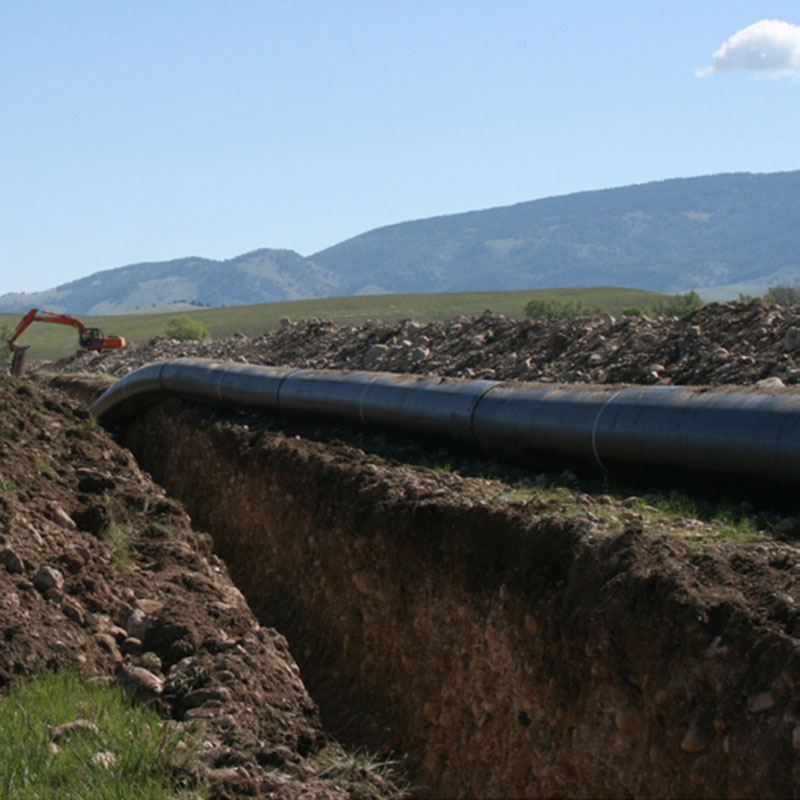
Pipeline Irrigation
In 2009, plans were approved for an enhanced Irrigation Expansion Project on the refuge. The main goal of the irrigation project was to water more of the refuge, which would help grow the natural forage during the summer to feed the elk and bison populations in the winter. The more than $5 million project received most of its funding from the American Recovery and Reinvestment Act (ARRA), which supplied $4.3 million. As one of the largest ARRA habitat enhancement projects in the nation for the USFWS, it involved the installation of nearly 48 miles of pipe, both small and large-diameter 4710 resin high-density polyethylene (HDPE) pipe.
To replace the open ditches and canals, the project called for the installation of a main pipe line along with several lateral pipe lines, with sprinklers set up to water the surface. As the refuge is known for its scenery, the USFWS wanted to ensure that the type of sprinklers used did not detract from any of the views, so a K line method of irrigation was chosen. K-line irrigation is a type of system that uses polyethylene (PE) pods that are spaced out along PE tubes. The lines of pods are mobile along a specific route. A small tractor or all-terrain vehicle (STV) is often used to move the pods.
The new irrigation system is designed as gravity-fed, saving on costs from having to use a diesel fuel pump to move the water. In addition, the piped system will increase the number of acres that are irrigated from about 900 to 4,000 acres. The USFWS estimates that even though more land will be irrigated, water use will remain relatively the same, as the new system will be far more efficient at getting water to its destination.
An added benefit of this type of irrigation is that the USFWS will not have to rely on supplemental food pallets to feed the animals during winter. When the elk and bison are clustered close together to feed, they are more susceptible to disease. The availability of more natural forage in the refuge means that the elk and bison will not have to congregate in close quarters where supplemental feeding is supplied.
“Growing more natural forage will help reduce high animal concentrations in the winter,” Refuge Manager Steve Kallin said. “The more the animals disperse, the more the risk of spreading infectious diseases will decrease.”
The animals start to return to the refuge in late August/early September to spend the winter months, so the project timeframe was very short, lasting from May 1 to early September. The project began in May of 2010.
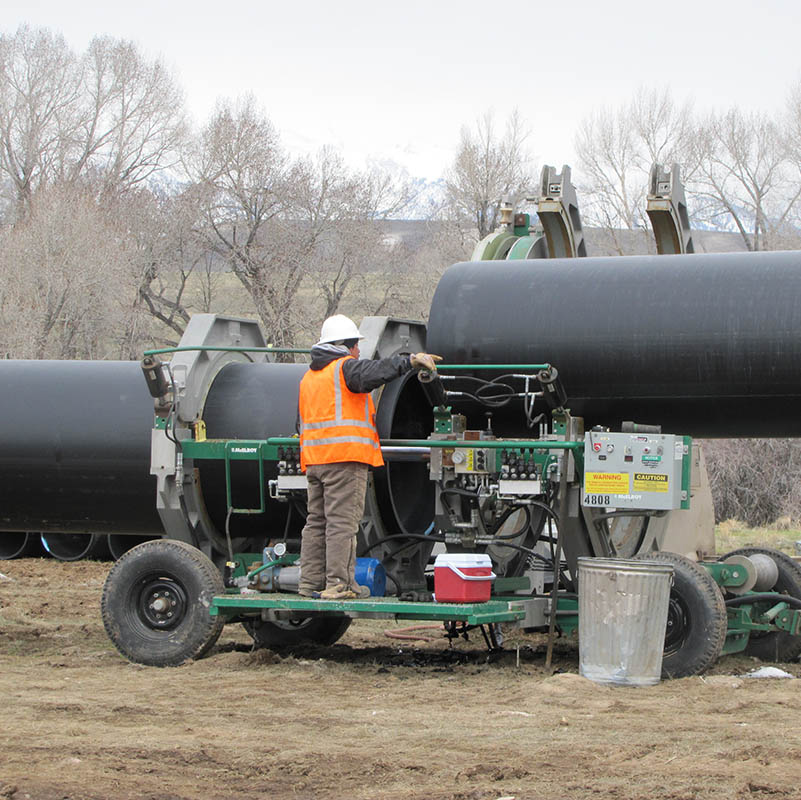
Fusion and Installation
The USFWS hired Yerba Buena Engineering & Construction, a minority-owned business, as the main contractor on the project. Yerba Buena then hired two sub-contractors, Westwood Curtis and Americom Technologies, to assist given the size and timeframe of the project.
HDPE pipe (4710 resin) was chosen as the best piping material for the project because it is environmentally friendly, flexible, leak-free, non-toxic and chemical and corrosion resistant, making it a good candidate for transferring water. Large-diameter HDPE pipe is fused on site. Photo courtesy of Westwood Curtis.
Yerba Buena contacted ISCO Industries’ representative Ray Kilpack to supply the necessary pipe and materials. ISCO Industries supplied HDPE pipe ranging in size from 3-inch to 42-inch pipe, fittings, saddles and fusion machines for the project’s three contractors.
In addition to overseeing the project, Yerba Buena’s project responsibilities included field design and making sure the project remained on schedule. ISCO Industries brought additional value to the project by providing expertise on HDPE pipe and products that helped assist in the design-build.
Kilpack and Rob Lawson, ISCO territory service manager, helped the contractor to value engineer the project, saving time and money. With their advice, Yerba purchased 24-inch to 42-inch HDPE pipe before the project began when prices were lower, an estimated savings of more than $300,000, and stored it until the project began in May.
Yerba Buena delegated the fusion of the nearly five miles of 24-inch through 42-inch large-diameter HDPE pipe to subcontractor Westwood Curtis. Westwood Curtis’ responsibility included installing seven miles of the main pipeline. ISCO Industries supplied Westwood with two McElroy fusion machines, while ISCO’s Field Technician Kevin Smith trained Westwood Curtis on how to fuse the large-diameter pipe.
One key part to the project depended on attaching pipe to a head gate on Flat Creek. The irrigation water will arrive from this head gate. Built in 1995, the main head gate was initially designed to include two pipes; however, only one 1,000 foot section of 27-inch pipe was installed. The second pipe installation was never completed or operational. In order to increase capacity, water flow was diverted away from the head gate to allow for installation of a second 1,000 foot section of pipe. The two sections of pipe were then joined by a manifold (pipe fitting) that fed into the 42-inch HDPE pipe that is the starting point of the main irrigation pipeline.
Westwood began fusing the large-diameter pipe in the middle of the first week of May. Because of its size, the 42-inch large diameter pipe sometimes took up to one and a half hours per segment to fuse. For efficiency purposes, the entire main line had to be fused together before installation.
Don Sowell, Yerba Buena project superintendent, said, “It has been a learning experience in regards to fusing and installing the large-diameter HDPE pipe. It is an extremely durable product. I think on a project this size and with the given timeframe, HDPE is the only material that can be installed on time.”

While the main line was being fused, Yerba Buena began laying out the smaller lateral lines in rows where the pipe would eventually be installed under ground. In addition, National Elk Refuge staff filled in about 100 miles of the old open irrigation ditches to make way for the new system.
By early June, the main line had been completely fused and Westwood Curtis began installing it into the ground. On average the pipe was installed at a speed of 900 feet/day. “We’ve been able to pull the pipe for the main line in place with our machines while at the same time fusing the pipe,” said John Long, project manager for Westwood Curtis. “The strength of the pipe is pretty impressive. A lot of people are surprised at how strong the welds actually are."
Another sub-contractor, Americom Technologies, was hired to fuse the lateral 3-inch through 18-inch HDPE pipe. Americom used a fusion machine purchased from ISCO in 2008.
After all lateral pipelines were fused, they were installed into the ground using
SpiderPlow equipment. Two machines and two workers were required at all times to complete the SpiderPlow installation of all lateral pipelines. An alternative to trenching and ditching, the SpiderPlow does not harm the environment because it involves very minimal ground disturbance during installation. The plow creates a narrow in ground slot, which is later filled in and compacted.
According to Sowell, the SpiderPlow encountered some challenges during the installation. “The north end of the project was so rocky that the plow struggled to get through it,” he said. “However, the SpiderPlow moves at a very fast speed, accomplishing a lot in a short time.”
The last phase of the project involved the installation of 410 risers, which were then attached to the K-line irrigation system.
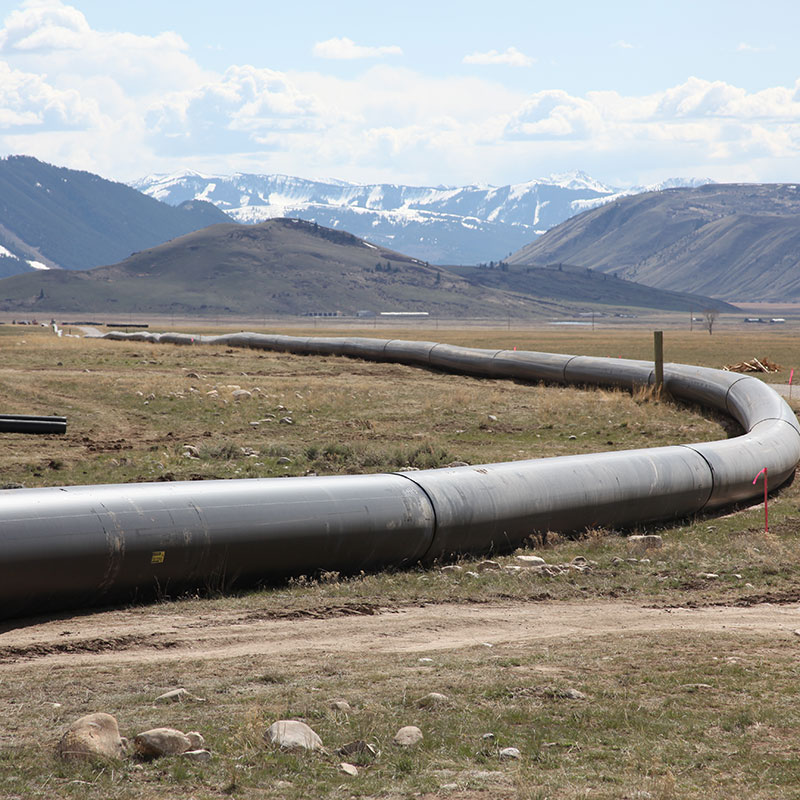
Project Goal Realized
By choosing HDPE pipe for the project, the canal system will no longer face the problem of water-loss from evaporation or contamination from outside soils. Also, even though more acres will be irrigated than in the past, the USFWS believes that water use will remain the same as the new system is more efficient.
Finally, the elk and bison will have more available forage, reducing the need to rely on supplemental food pallets. This will keep the herds spread apart throughout the refuge, helping to minimize the risk of spreading diseasethrough unnecessary contact between the animals.
SUBSCRIBE TO ISCO UPDATES
ISCO Updates
[gravityform id="21" title="true"]
